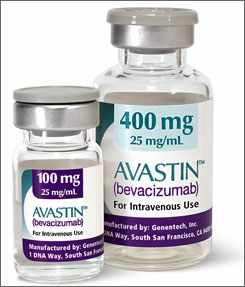The discovery, which is already being tested in co-clinical trials, brings new clues for the treatment of this disease
Lung cancer is one of the most aggressive types of cancer and the most common cause of death from this disease worldwide. Despite the progress in the molecular biology of lung cancer achieved in recent years, the mechanisms used by tumor cells to grow and spread throughout the body are not yet completely understood. This lack of information is responsible for the limited range of available therapeutic possibilities and their undesirable side effects.
The Tumour Suppression Group of the Spanish National Cancer Research Centre (CNIO), led by Manuel Serrano, has deciphered one of the molecular pathways behind lung cancer. Using this information, the authors have identified an experimental drug, which blocks lung cancer growth in mice. This work is published today in the scientific journal Cancer Cell.
Standing up to lung cancer
Notch was identified in 2004 as an important oncogene for the development of leukemias and, since then, intense efforts have been devoted to study the role of Notch in other cancers. At the end of the last decade it was found that Notch is also involved in the development of pancreatic and lung cancer.
In this study, Serrano's team has identified the molecular pathways by which Notch regulates cell proliferation in lung cancer. "We have found that this protein cooperates with the Ras oncogene, a key element in the formation of these tumors", states Serrano.
Researchers have also discovered the therapeutic effect of a specific experimental drug which blocks Notch efficiently, named GSIs (Gamma-Secretase Inhibitors). To this end, scientists used genetically modified mice previously developed by Mariano Barbacid, head of the Experimental Oncoloy Group at the CNIO, that faithfully recapitulate human lung cancer. "After 15 days of treatment, lung tumors failed to grow without treatment-related side effects", says Antonio Maraver, the first author of the study.
Co-clinical trials both in humans and mice
GSIs were developed over 15 years ago to treat Alzheimer's disease. Although now it is well established that GSIs are not useful to stop this neurodegenerative disease, the discovery that these drugs block Notch has stirred the interest in their possible application for cancer. The accumulated knowledge acquired over the years on the pharmacological properties of GSIs has permitted their immediate use in clinical trials for cancer.
Mouse therapeutic trials performed in parallel with humans clinical trials are called coclinical trials, and are at the cutting edge of biomedical research. These trials allow the transference of information from mice to humans in a very short period of time. A clear example is this research, which is being accompanied by a human clinical trial led by Manuel Hidalgo, director of the Clinical Research Program at the CNIO.
"The assays developed by Serrano led us to believe that blocking Notch could be beneficial for treating lung cancer. We have already treated a dozen patients with an agent directed at the blocking of this protein. We are expanding the study, but I can anticipate that the results are very promising", says Hidalgo.
Lung cancer is one of the most aggressive types of cancer and the most common cause of death from this disease worldwide. Despite the progress in the molecular biology of lung cancer achieved in recent years, the mechanisms used by tumor cells to grow and spread throughout the body are not yet completely understood. This lack of information is responsible for the limited range of available therapeutic possibilities and their undesirable side effects.
The Tumour Suppression Group of the Spanish National Cancer Research Centre (CNIO), led by Manuel Serrano, has deciphered one of the molecular pathways behind lung cancer. Using this information, the authors have identified an experimental drug, which blocks lung cancer growth in mice. This work is published today in the scientific journal Cancer Cell.
Standing up to lung cancer
Notch was identified in 2004 as an important oncogene for the development of leukemias and, since then, intense efforts have been devoted to study the role of Notch in other cancers. At the end of the last decade it was found that Notch is also involved in the development of pancreatic and lung cancer.
In this study, Serrano's team has identified the molecular pathways by which Notch regulates cell proliferation in lung cancer. "We have found that this protein cooperates with the Ras oncogene, a key element in the formation of these tumors", states Serrano.
Researchers have also discovered the therapeutic effect of a specific experimental drug which blocks Notch efficiently, named GSIs (Gamma-Secretase Inhibitors). To this end, scientists used genetically modified mice previously developed by Mariano Barbacid, head of the Experimental Oncoloy Group at the CNIO, that faithfully recapitulate human lung cancer. "After 15 days of treatment, lung tumors failed to grow without treatment-related side effects", says Antonio Maraver, the first author of the study.
Co-clinical trials both in humans and mice
GSIs were developed over 15 years ago to treat Alzheimer's disease. Although now it is well established that GSIs are not useful to stop this neurodegenerative disease, the discovery that these drugs block Notch has stirred the interest in their possible application for cancer. The accumulated knowledge acquired over the years on the pharmacological properties of GSIs has permitted their immediate use in clinical trials for cancer.
Mouse therapeutic trials performed in parallel with humans clinical trials are called coclinical trials, and are at the cutting edge of biomedical research. These trials allow the transference of information from mice to humans in a very short period of time. A clear example is this research, which is being accompanied by a human clinical trial led by Manuel Hidalgo, director of the Clinical Research Program at the CNIO.
"The assays developed by Serrano led us to believe that blocking Notch could be beneficial for treating lung cancer. We have already treated a dozen patients with an agent directed at the blocking of this protein. We are expanding the study, but I can anticipate that the results are very promising", says Hidalgo.







